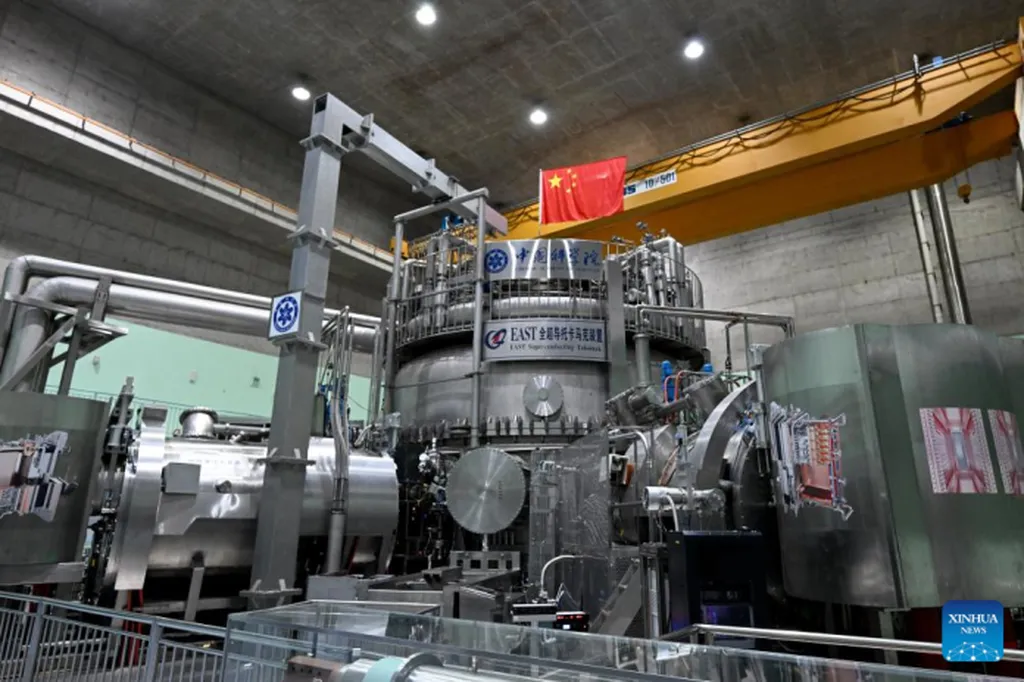In the heart of China, at the Experimental Advanced Superconducting Tokamak (EAST) facility, scientists have achieved a significant milestone in the quest for sustainable fusion energy. A team led by Baoguo Wang from the Institute of Plasma Physics, part of the Chinese Academy of Sciences in Hefei, has successfully demonstrated a deeply detached X-point radiator (XPR) regime, a breakthrough that could greatly influence the future of fusion reactors.
The research, published in the journal “Published in Nuclear Fusion,” focuses on radiative divertor detachment, a technique used to mitigate the intense heat and particle fluxes that can damage the divertor target in a tokamak, a device used to confine hot plasma with magnetic fields. The divertor is a critical component in a tokamak, acting as a exhaust system for removing waste products and maintaining plasma purity.
Wang and his team have developed a tangentially viewing camera system to observe the lower divertor plasma, allowing them to reconstruct a 2D distribution of nitrogen (N II) line radiation. This innovation has enabled them to achieve deep detachment with a stable XPR, even with a tungsten divertor and metal first wall components. “The profiles of electron temperature and heat flux with a distance to the strike point larger than 6 cm are radially flat on the outer divertor target in the deeply detached state,” Wang explains. This means that the heat and particle fluxes are effectively spread out and reduced, protecting the divertor target from excessive heat loads.
The XPR regime contributes to effective divertor protection by mitigating heat and particle fluxes and suppressing divertor target sputtering. This is a significant step forward in the development of fusion energy, as it addresses one of the key challenges in making fusion reactors viable for commercial use.
The implications of this research are substantial for the energy sector. Fusion energy, with its potential for abundant, clean, and safe power, could revolutionize the way we meet our energy needs. The successful demonstration of the deeply detached XPR regime on EAST brings us one step closer to realizing this vision.
As we look to the future, the work of Wang and his team could shape the development of next-generation fusion reactors. By providing a means to protect the divertor target from excessive heat loads, this research could pave the way for more efficient and durable fusion reactors, bringing us closer to a future powered by clean, sustainable fusion energy.
In the words of Wang, “This achievement is a significant step forward in our understanding of radiative divertor detachment and its potential for mitigating heat and particle fluxes in fusion reactors.” As we continue to explore the possibilities of fusion energy, the work of Wang and his team serves as a beacon of hope and a testament to the power of scientific inquiry.

